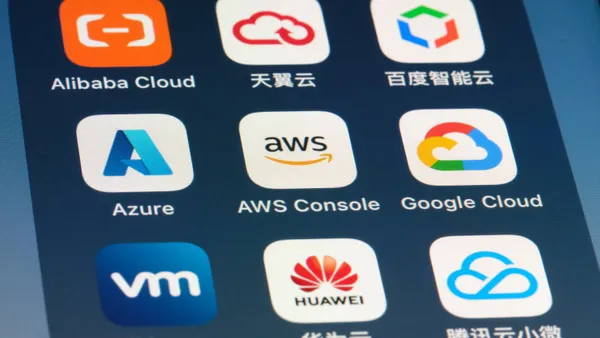For an average viewer watching a Formula E race, where IT fits into operations likely does not come to mind. But it's a critical part of the sport’s success.
In order for drivers and team members to get up-to-date information, monitor their carbon emissions and gain insights from data, IT professionals need to establish a network capable of supporting the workload and troubleshoot issues under pressure.
For Formula E races, IT teams arrive in a city somewhere in the world from Asia to the U.S., set everything up, break it down and move to the next location. It’s a process that Friedemann Kurz, head of IT at Porsche Motorsport, compared to going on tour with a rock band.
“We operate the IT during the race weekend, and then we pack down everything again and all that happens within three or four days,” Kurz said during a live event hosted by Cato Networks in June. “That means it has to be super efficient, and that’s the main challenge we are facing.”
No matter the industry, IT teams can relate to chasing a moving target. Employee preference toward hybrid work pushed IT teams to remain agile even after the pandemic subsided. While the majority of IT teams aren’t physically moving from city to city, it requires a high level of efficiency from every member of the Formula E teams — a goal every IT team aspires to reach.
For the Tag Heuer Porsche Formula E team, small groups of highly experienced IT people head to the races. Just a single member of the team is responsible for operating and building up the network. In order for that team member to be successful, the company focuses on the depth of the products it uses to enable simplicity.
Before engines start
The first electric-powered car race took place on the grounds of the Olympic Park in Beijing in 2014, according to The ABB Fia Formula E World Championship organization. In its ninth season, the carbon net zero certified racing series operates worldwide.
Formula E races are typically held in nine different sites, including Mexico City and Cape Town, South Africa, on non-permanent racetracks. Sometimes tracks run on streets close to the city’s center, allowing spectators easy access to watch.
“Non-permanent race tracks means there is no infrastructure at all [when] we arrive,” Kurz said. “You need to build up the whole infrastructure and all that within one or two days.”
Porsche’s IT team arrives at the same time as the rest of the team, creating another challenging element to operations.
“They are asking how long it takes until they’re online, and we are building it up in parallel,” Kurz said. “We still can prepare some things by using a VPN, for instance.”
As soon as the network is ready, the rest of the team is able to begin full operations, but that’s not where IT’s responsibilities end. Data is a large part of the overall strategy for the team.
Back at headquarters, engineers analyze data gathered from the vehicle during the race to send back to the team on the ground to improve strategies and execute on the findings, Kurz said.
“It’s very data intense and it needs to be transferred back and forth through the wide area network, not just locally at the racetrack,” Kurz said.
To ensure this transfer goes smoothly, real-time communication is key. The team operates on a proprietary format to ensure quality of service and create a loop of information between the engineers at the headquarters, the team on the ground and the driver in the car.
“All the data we’re collecting are fetched into huge calculation models and mathematical models and by doing so we try to find better setups, better strategies,” Kurz said. "Especially the energy strategy in Formula E is crucial."
The Tag Heuer Porsche Formula E team currently sits on the top of the season leaderboard with seven podium appearances and four wins so far in the 2022-2023 season, according to the ABB Fia Formula E World Championship organization. The sport's 13th of 16 total rounds begins July 15 in Rome.













